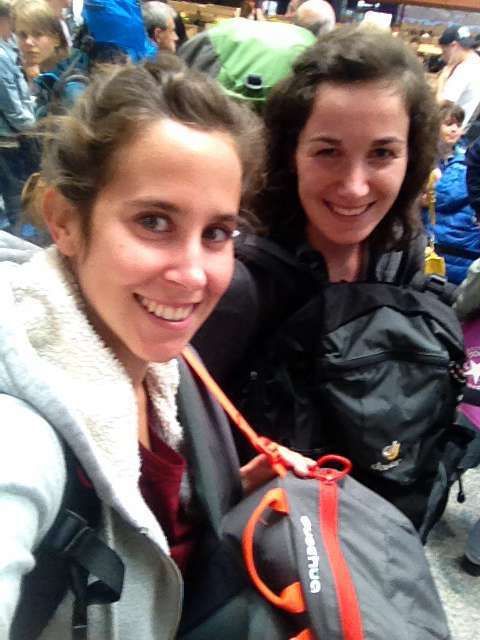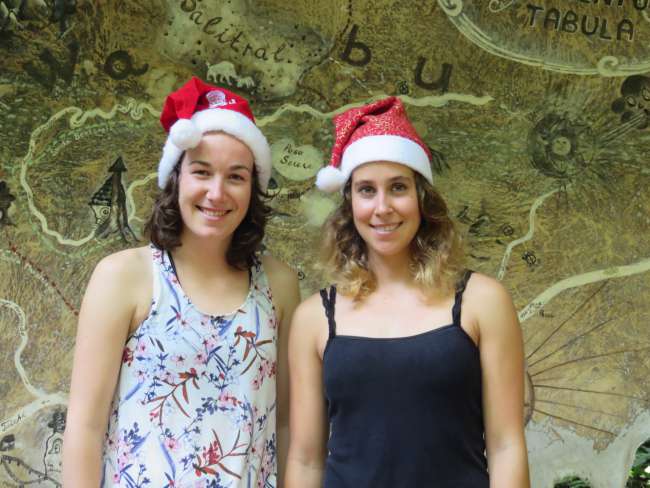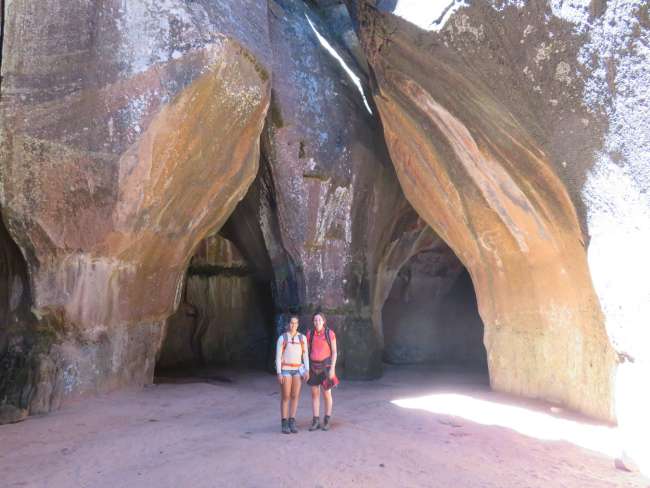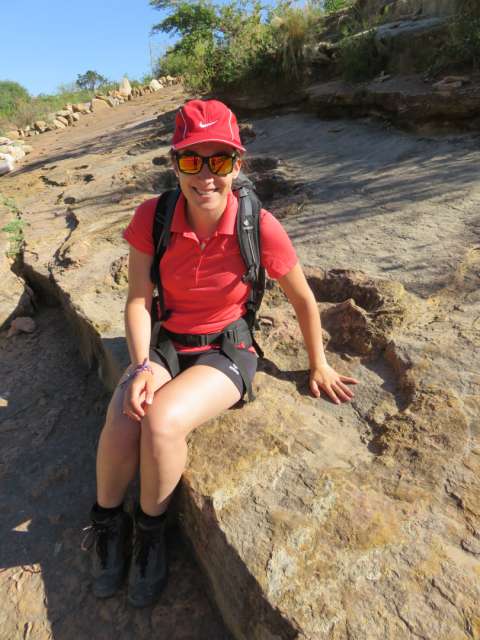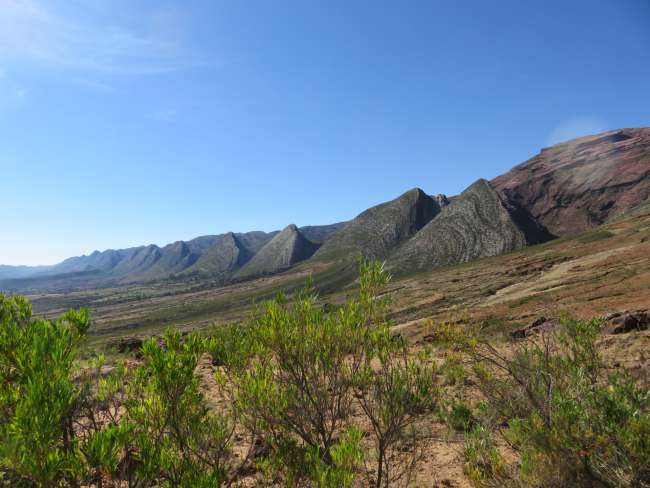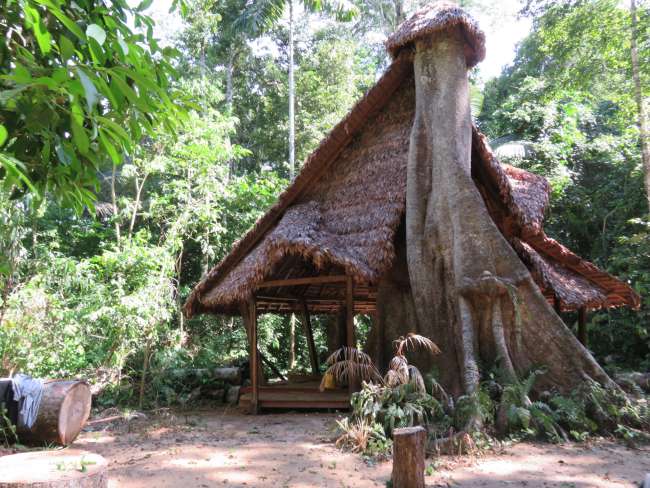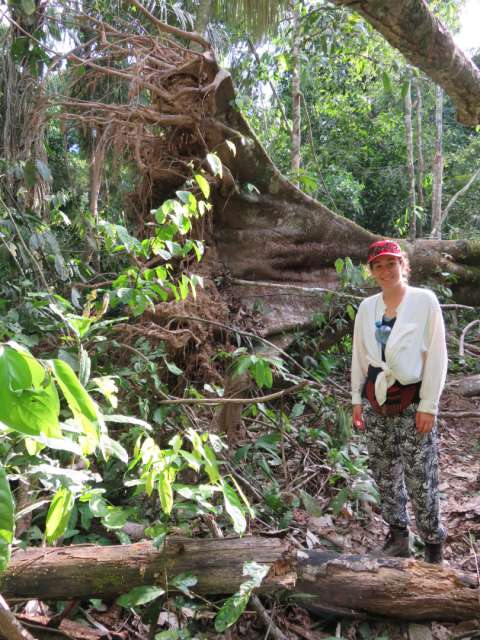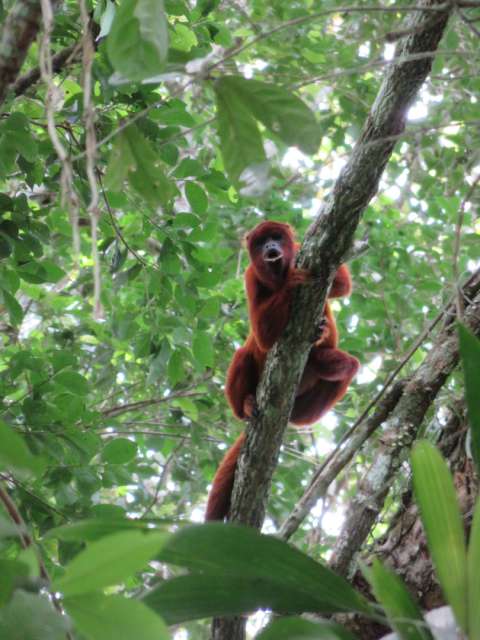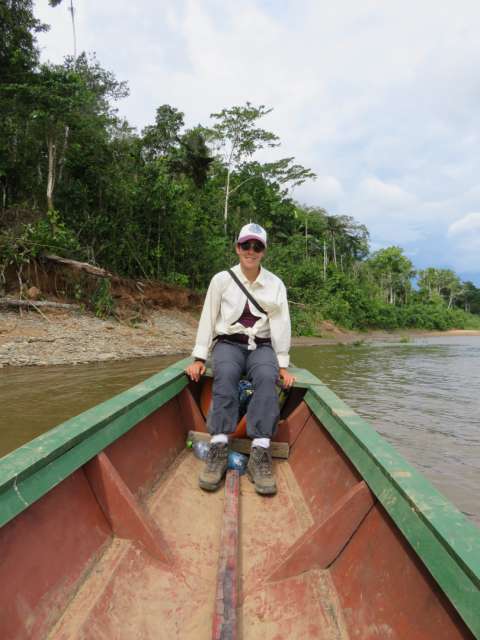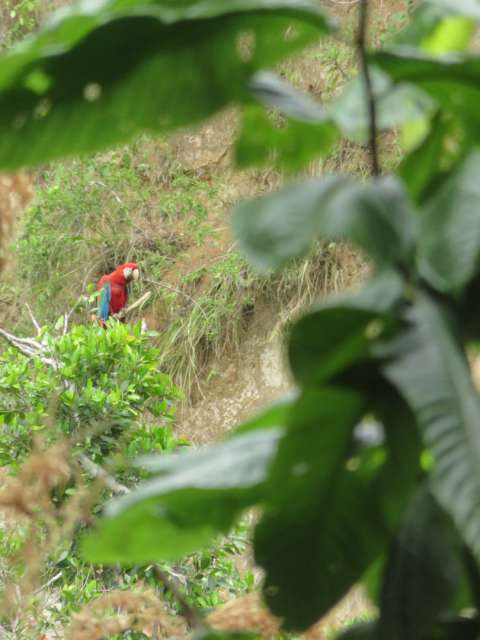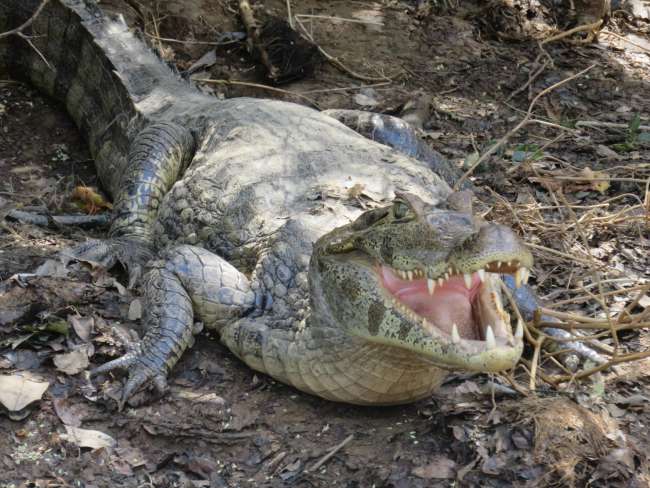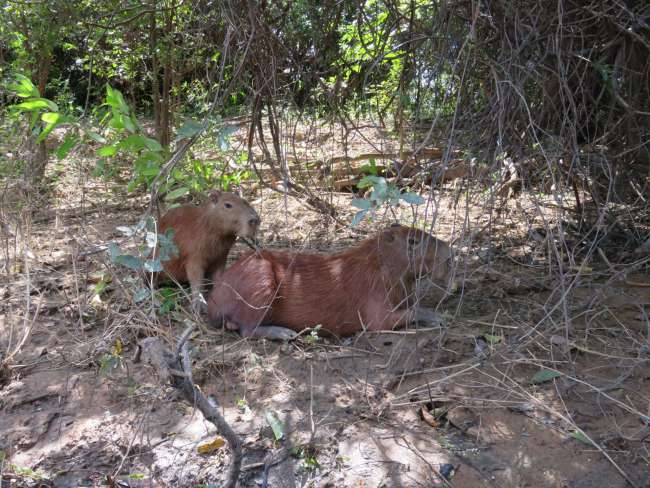From the Jungle to the Dinosaurs
Опубликовано: 21.12.2016
Подписаться на новостную рассылку
After the city of La Paz, we took a small plane to the jungle town of Rurrenabaque. The flight lasted only half an hour, but the environment changed completely. From an altitude of 4000 meters to 300 meters and from 10 degrees and rain to 32 degrees and sunshine. Because of the high humidity, sweat flowed day and night.
Our first tour in the Amazon was a three-day jungle tour. We took a boat for about three hours up the Beni River to the lodge. From there, we went on walks through the dense forest, exploring the diversity of plants and animals. We saw various creepy-crawlies like ants, spiders, and more, and learned a lot about the plants and their uses. We spent the first night in a cozy treehouse eco-lodge. On the second day, we visited the red and blue macaw parrots in the morning. In the afternoon, we packed up and marched to our jungle camp. The camp consisted of a tarp for rain, a tarp to sleep on, and a fire pit. We had to catch our own dinner, but since we had little luck, it was a vegetarian meal. As it got dark, the mosquitoes feasted on us despite our long clothes and mosquito repellent, and we were glad to crawl under the mosquito nets we brought to sleep. On the last morning, we dedicated ourselves to art and made our own souvenir necklaces from natural materials. Shortly before returning, we heard the impressive screams of two howler monkey packs fighting over territory and were even able to observe them.
The second tour took us to the Pampas of the Amazon, which consists of less forest and more grassland. Most of the time, we spent on the boat in the river, observing the variety of animals. We saw plenty of smaller caimans (crocodiles) and even two large black caimans. Later, we made acquaintance with the giant guinea pigs of the Amazon: capybara. We could also observe various bird species on the riverbank. The cute yellowish squirrel monkeys accompanied us almost the whole time and could also be seen from our accommodation. And in the morning, we were awakened by the screams of howler monkeys. We even got to observe a third species of monkeys, namely the capuchin monkeys. On the morning of the second day, we set off on foot in a muddy and partially flooded field in search of snakes. The chances of finding something were actually not very high. But we were very lucky and after about two hours of searching, we found an approximately three-meter-long, about 10-year-old anaconda. Since there was little water, it wasn't very fast, and we could observe it well. On the way back, we even encountered a second, slightly longer anaconda. At noon, we experienced a real thunderstorm in the Amazon. It poured for about two hours, and we were grateful for our roof. When the rain stopped, we tried piranha fishing and were actually successful enough to have piranha for dinner. On the morning of the third day, we looked for pink river dolphins to swim with. When we found some, it took some courage to jump into the water, knowing what kind of crocodiles and fish lived in these waters. But our guide assured us that all these species were afraid of the dolphins and avoided them. Unfortunately, the dolphins were not in a playful mood and kept a safe distance from us.
After the Amazon, we went to the mountains of Bolivia. We traveled for about 24 hours by plane and bus to Torotoro. The place is quite remote and can only be reached by an unpaved road. There is neither a bank nor phone reception, and the Wi-Fi is limited to certain hours and dependent on the weather. The village is situated in an impressive environment, and you really feel like dinosaurs could still live here. It is mandatory to book a guide to do tours. So we found people to form a group and hired a guide. We visited the Ciudad de Itas, a rock formation formed by water, with many large caves, and in the afternoon, we descended into the Caverna de Umajantalan and admired the stalactites. The next day, we hiked to the Vergel Canyon and bathed near the Cascaden Waterfalls. The way back led over rocks and stones, first in the canyon, then along the steep wall, and finally across the open field. We saw many extremely well-preserved footprints of dinosaurs and were surprised at how big they actually are. In Europe, these tours could certainly not have been carried out so easily, because the paths were hardly secured, and even in the cave, there was only an occasional rope for assistance. But we survived everything well and are now looking forward to Christmas.
We wish everyone 'Feliz navidad y nuestros buenos deseos para todos'!
Подписаться на новостную рассылку
Отвечать

Отчеты о поездках Боливия

